By Pat Jones | We love it when superintendents share great ideas on Twitter. We love it even more when they share innovative ideas about using Redox products for success. Here’s the first installment: Joe Hollis at Druid Hills CC in Atlanta.
You don’t necessarily think about Druid Hills Country Club when you start talking about great Atlanta-area golf courses…but you should.
Designed by Herbert Barker in 1912 and built with a construction assist from the legendary Olmsted Brothers firm, it was quite literally the course across the street for a kid named Robert Tyre Jones Jr. In fact, he won the club championship there at the ripe old age of 13. It’s also been a site for one of the earliest women’s national championships as well as host to the longstanding Dogwood Invitational tournament for college standouts.
It’s pretty clear after about five minutes of talking with the superintendent, Joe Hollis, that he loves the place. It is, of course, his job to make sure that modern conditions meet the expectations built by the club’s legendary history. Recent work by architect Bill Bergin has also shined a spotlight on Druid Hills and put it into the conversation with the area’s more famous facilities.
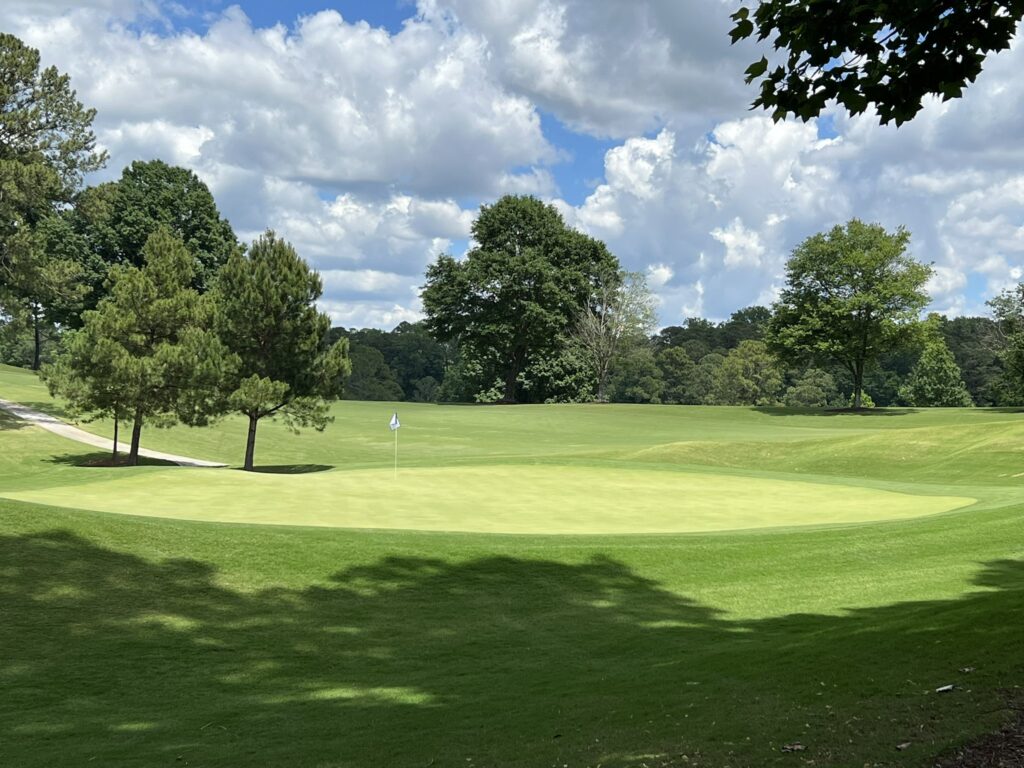
Hollis is a Georgian through and through. He grew up in a little town called Trion, the son of a local high school football coach. Joe explained how his love for golf started as just a small job: “On our way to summer workouts with the team, my dad would drop me off at our little local 9-hole course where I’d work in the mornings and then play golf until he picked me up in the afternoon. It was great.”
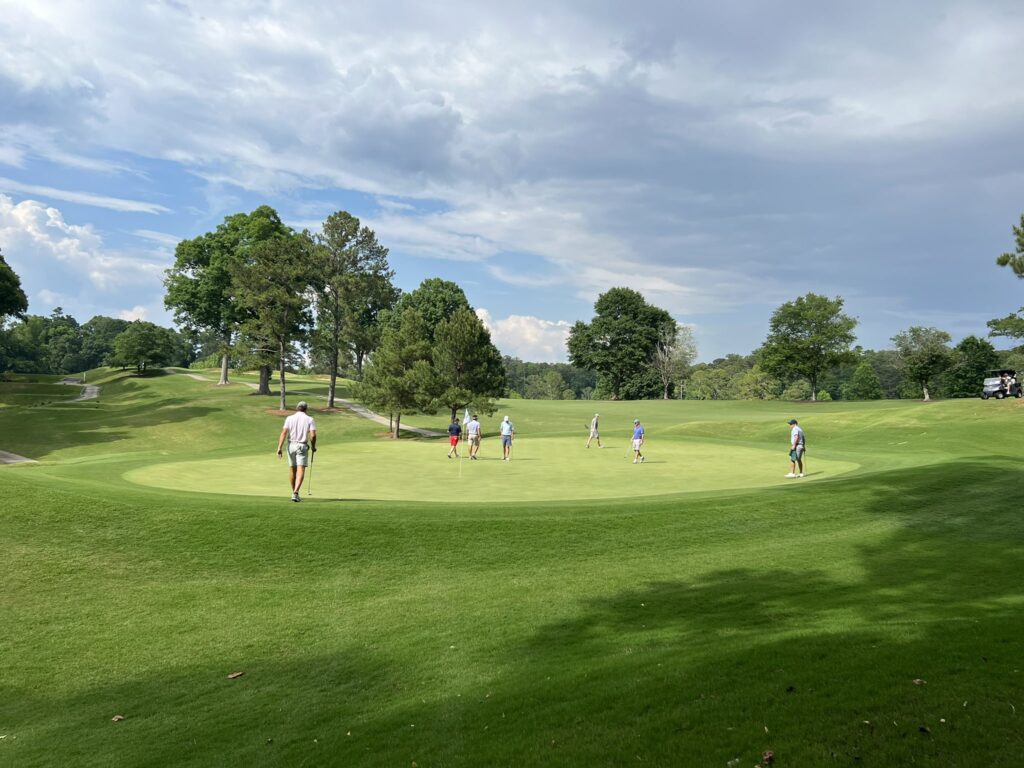
Joe went to UGA in 2004 thinking about a degree in Landscape Architecture, but an offhand decision to enroll in an ‘Intro to Turfgrass’ class with the legendary Dr. Keith Karnok changed the trajectory of his life. “I realized you could make a career out of it and that started me down the path,” Joe recalls. He interned at a public course near home and then at Athens Country Club, where he worked through college. After graduation, we went on to work for and learn from Mark Esoda at Atlanta Country Club for almost 9 years.
He took the helm at Druid Hills in 2018. Joe explained that it wasn’t an easy transition: “When I got here, we had some pretty big struggles with turf quality in areas in fairways, around greens, and even the greens themselves. But it was really about getting the details dialed in and getting the greens consistently healthy.”
Hollis is growing A1/A4 bent on greens and primarily TifSport in fairways. He is a tinkerer who’s currently testing a bunch of new turf varieties: “We’re searching for what’s best on each part of the golf course. We’re definitely in the transition zone because we can grow a little bit of everything.”
Soil is definitely an issue for him. The greens are USGA construction but the rest is hardpan clay. The top half of the course is rocky with poor soils and drainage and the lower part is sandier but still has a lot of rock. “We’ve got issues,” Joe said. “We’re growing bent in Georgia, TifSport doesn’t like traffic, and we have many trees. Other than that, it’s great,” Joe said jokingly.
Hollis kept hearing about Redox from his buddies and reached out to Aquatrols’ Barry Bennett and local expert Jimmy Jeter. “I’m always willing to try some stuff out so Barry and Jimmy helped to educate me. They showed me results from other places and it got me thinking about how our grass would respond to it.”
Last fall, the pricing and logistics of spreading potash made the idea of using Redox even more compelling. Rather than tinkering, Hollis decided to go for it and do two applications in the fall.
From a cost and simplicity perspective, Joe explained that it was a win – particularly on a course that wasn’t typically dry enough for a bulk fertilizer spreader: “We didn’t have to worry about the spreader truck causing problems. We gave it a shot and were really, really happy with the results.”
Here’s how he described it in his Twitter DM to us:
“Last fall we did 2 applications a month apart (September/October) with TurfRx K+ Micro Crystal on all short grass as an alternative to our traditional fall granular potash app. It was significantly cheaper and we held the green color longer and when we got a warm-up in late December we bounced out of dormancy and looked like mid-season color/density on fairways. We then got shocked with cold weather again last February but again bounced out and we’re very green in short grass areas now.”
“We’ve implemented Redox into all of our short grass sprays for this season and have made one app recently to further encourage the turf. We are seeing very good signs, and are also using it on greens as well and are happy with the results so far.
1st pic is late December/Early January after the first warm spell on TifSport, no paint, and a light rate of pigment was used when TurfRx K+ was sprayed in October.
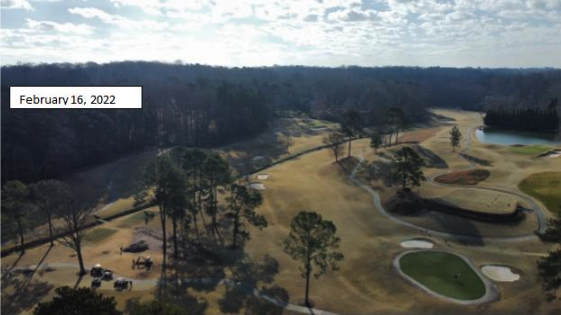
Same fairway from elevated view with warm spell mid-March prior to first fairway application, quickest dormancy break for TifSport I’ve seen, and again only change in program was TurfRx K+ Micro Crystal addition in fall.
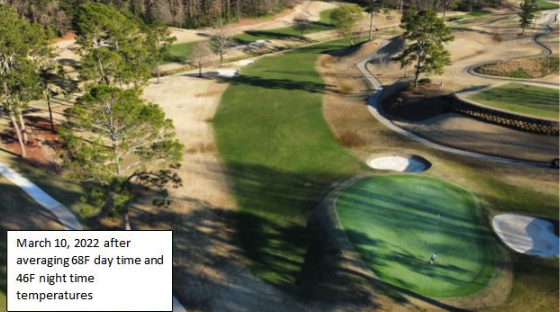
Joe also added to his explanation: “We definitely held color longer on fairways. The rough kept the green color longer as well. When the rough went dormant the fairways held color. It didn’t look worn out. We didn’t really see as much worn-out turf. It didn’t look tired this year. The members asked about it. They looked like late spring going into summer. The TurfRx K+ Micro Crystal was the only thing I changed in our program so we knew it was the Redox.”
Hollis has also tried TurfRx Oxycal on his greens: “The response was better, and more uniform green color – the turf was happier. I don’t have data to back that up but it seemed happier. Our greens are small and they have a little more thatch than we’d like. We sprayed OxyCal and they responded really well.”
Moving forward, his greens program will include a mix of TurfRx solutions: Green, K+ Micro Crystal, OxyCal (pre and post aerification), Micro+, P+, and Si. “We’ve made those part of our seasonal rotation on the greens. We’re dialing down N on the greens a little every year. They used to get puffy in the spring so we’re reining in the N and we’ve been really happy with the performance we’ve seen so far.
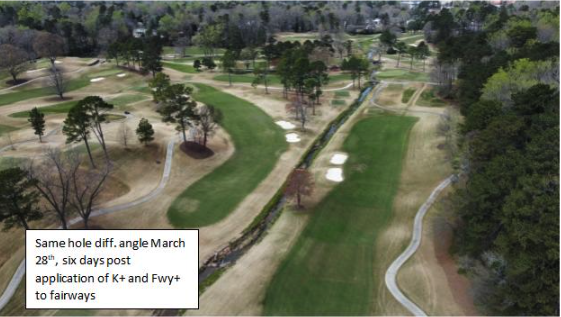
On fairways, he’s using TurfRx Fairway+ and K+ Micro Crystal to “juice ‘em up and get ‘em ready.” Once the turf is growing actively he will start using PGR every 14 days and will put the Fairway+ in that spray and occasionally alternate with TurfRx Micro+ and P+. “The goal is to keep them healthy but firm,” Joe says.
One additional benefit Joe likes: “Because of the low use rates, mixing is easy, the application is easy and even at those low rates you see the response. The old stigma of this being expensive just doesn’t ring true. To me, it gives you a lot of bang for your buck at low rates.”
What’s his recommendation to others? “If you do it right, you’ll see a lot of turf health benefits. We didn’t see that worn-out look and it seems like the plant responds really well to everything we’ve sprayed. In my opinion, the turf will respond pretty quickly. There’s something in there the plant needed and Redox clearly delivers it.”

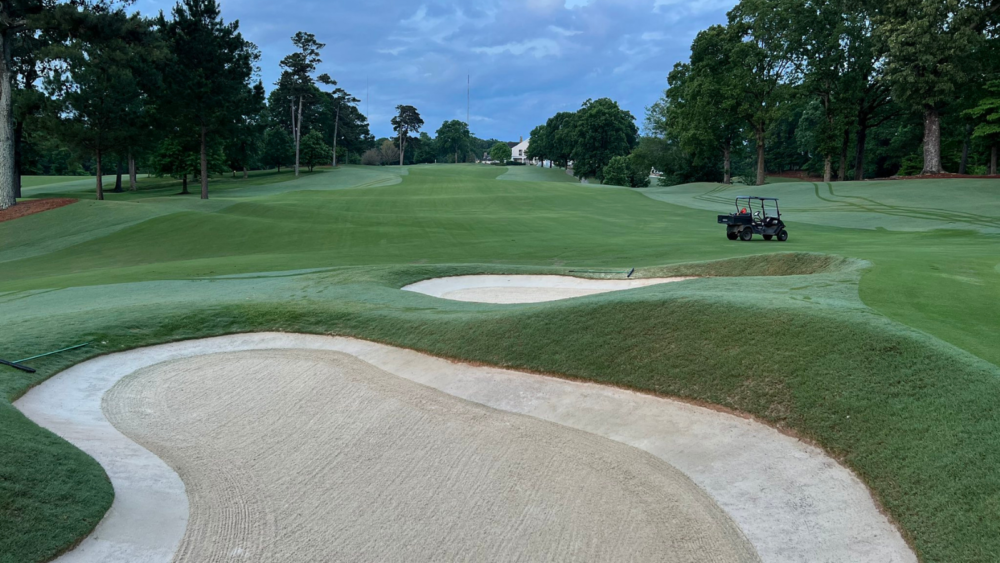


Comments are closed.